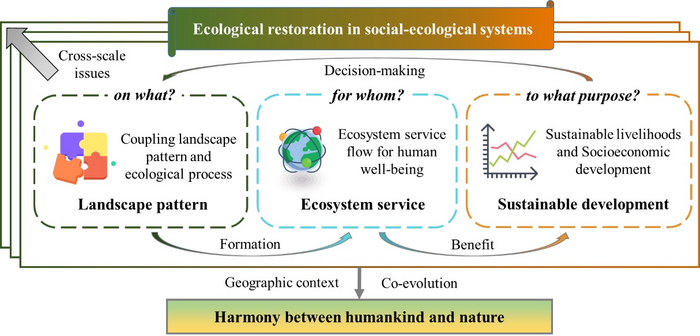The UN Decade on Ecosystem Restoration, which runs from 2021 to 2030, is a rallying cry for the protection and revival of ecosystems for the benefit of people and nature. It encourages the timely fulfillment of sustainable development goals (SDGs).
China is tackling the problem of ecological restoration at the national level, seeing it as a vital component of so-called ecological civilization. However, there have been few national-scale reviews of China’s ecological restoration for sustainable development initiatives to date.
In a paper published on February 23rd, 2023, in National Science Review, scientists guided by Prof. Bojie Fu of the Chinese Academy of Sciences evaluated China’s progress in ecological restoration for sustainable development.
They suggested a co-evolutionary framework called “landscape pattern—ecosystem service—sustainable development” to explain landscape-scale ecological restoration and its influence on landscape patterns and ecological processes, ecosystem services for human well-being, sustainable livelihoods, and socioeconomic development.
From the strategic design of national ecological security to the pattern of major projects to safeguard and restore significant national ecosystems, China’s ecological restoration is becoming more regionally linked. By 2022, more than 25% of China’s territory will be covered by ecological red lines, which are thought to significantly alleviate or reverse ecosystem deterioration in ecologically essential and sensitive regions.
The researchers identified three stages of ecosystem services management in China: classification, synergy, and integration, from primary function-oriented zoning to systematic ecological conservation and restoration toward realizing the Beautiful China Initiative.
The researchers also believe that past programs, which began as early as 1978, should not be viewed as the final word on China’s contribution to ecological restoration, as there is still work to be done to incorporate the social–ecological systems approach into recent and future programs.
Based on quantitative evidence, the researchers discovered that previous ecological restoration programs in China significantly impacted ecosystem services, particularly carbon sequestration, soil retention, and water yield, as well as their interactions. However, some spatiotemporal tradeoff relationships must be considered.
The researchers discovered local win-win synergies between ecosystem health, sustainable livelihoods and socioeconomic development. However, identifying such win-win solutions for regional policymaking is still ongoing due to differences in benefits and incentives across scales.
Prof. Fu, as a geographer, emphasized the significance of geographical research for integrated ecological conservation and restoration. From a social-ecological system perspective, four important research directions were proposed: determining the nature of coupling processes among major components, highlighting ecosystem service flows, assessing social-ecological benefits, and supporting adaptive management for regional sustainable development.
Journal Reference
Fu, B., et al. (2023). Ecological restoration for sustainable development in China. National Science Review. doi.org/10.1093/nsr/nwad033.
Source: http://www.scichina.com/english/
Credit:Source link



